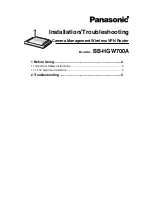
1-2
Figure 1-1
Unicast transmission
Source
Receiver
Receiver
Receiver
Host A
Host B
Host C
Host D
Host E
Packets for Host B
Packets for Host D
Packets for Host E
IP network
Assume that Host B, Host D and Host E need the information. A separate transmission channel needs
to be established from the information source to each of these hosts.
In unicast transmission, the traffic transmitted over the network is proportional to the number of hosts
that need the information. If a large number of users need the information, the information source needs
to send a copy of the same information to each of these users. This means a tremendous pressure on
the information source and the network bandwidth.
As we can see from the information transmission process, unicast is not suitable for batch transmission
of information.
Broadcast
In broadcast, the information source sends information to all hosts on the subnet, even if some hosts do
not need the information, as shown in
Figure 1-2
.
Summary of Contents for S7902E
Page 82: ...1 4 DeviceA interface tunnel 1 DeviceA Tunnel1 service loopback group 1 ...
Page 200: ...1 11 DeviceB display vlan dynamic No dynamic vlans exist ...
Page 598: ...ii ...
Page 1757: ...4 9 ...
Page 1770: ...6 4 ...
Page 2017: ...2 11 Figure 2 3 SFTP client interface ...
Page 2238: ...1 16 DeviceA cfd linktrace service instance 1 mep 1001 target mep 4002 ...
















































